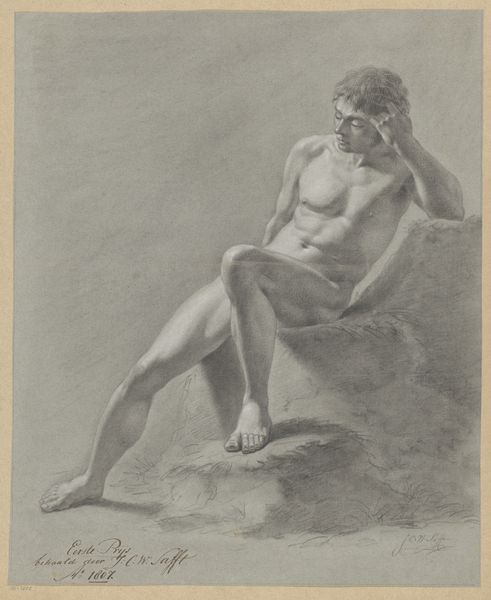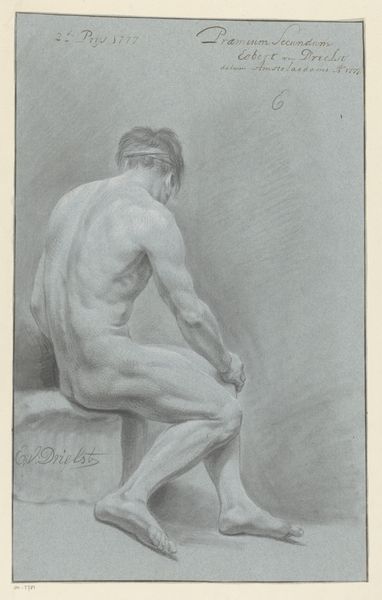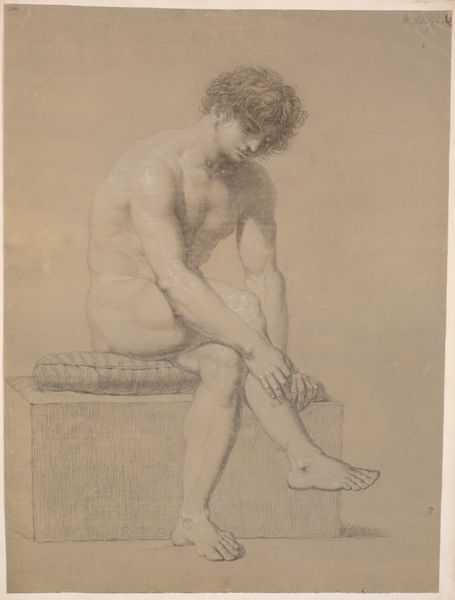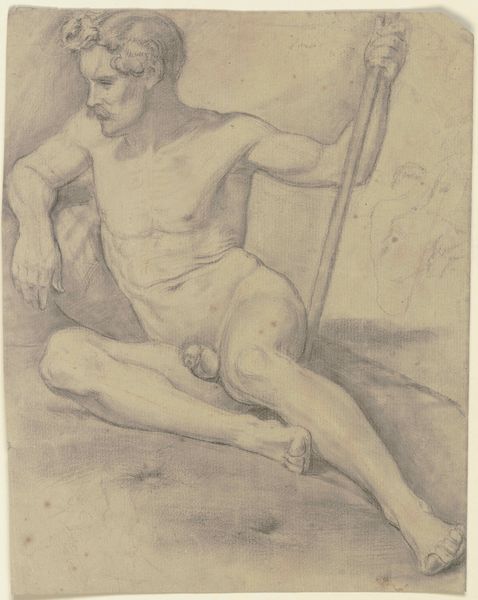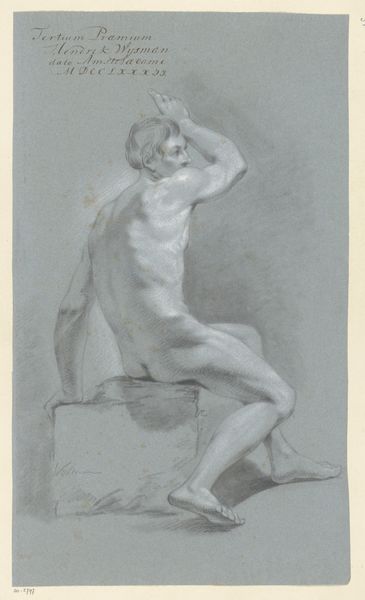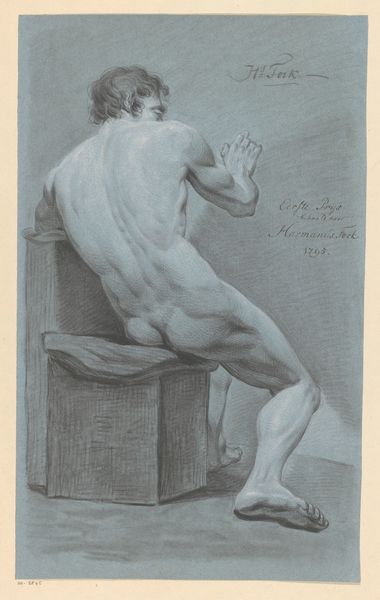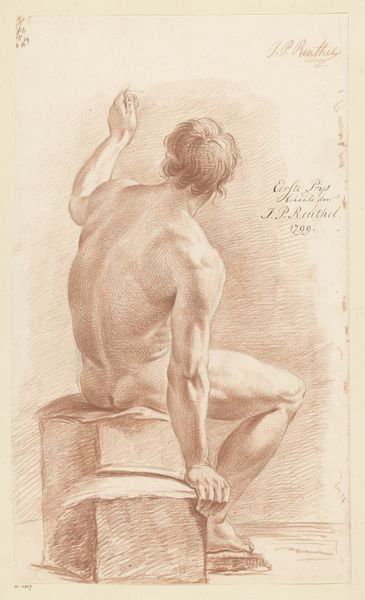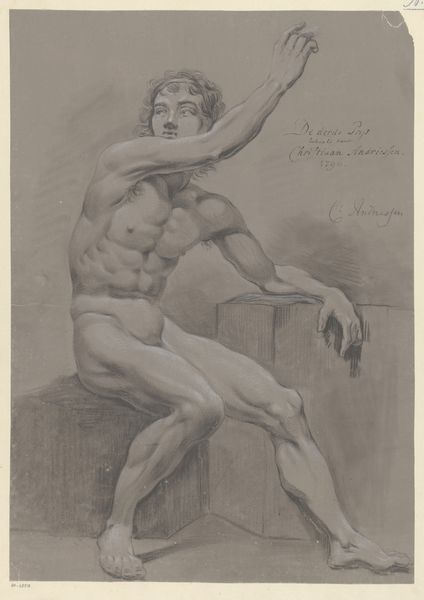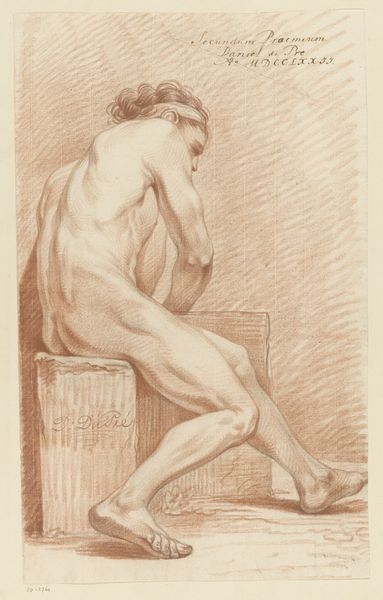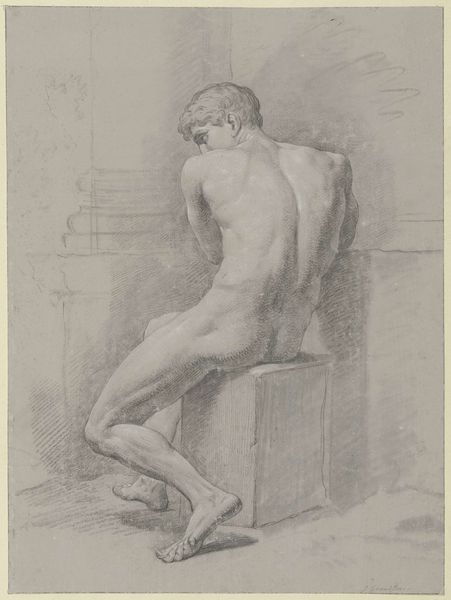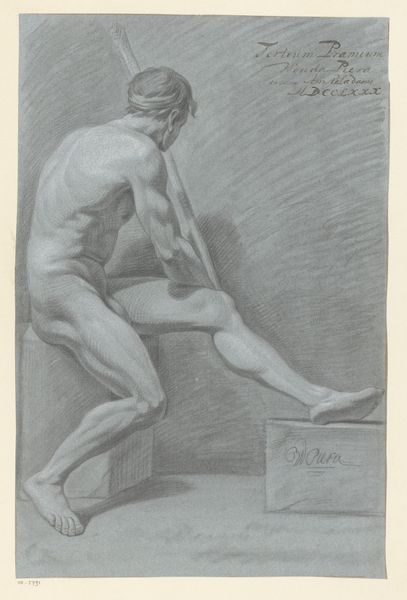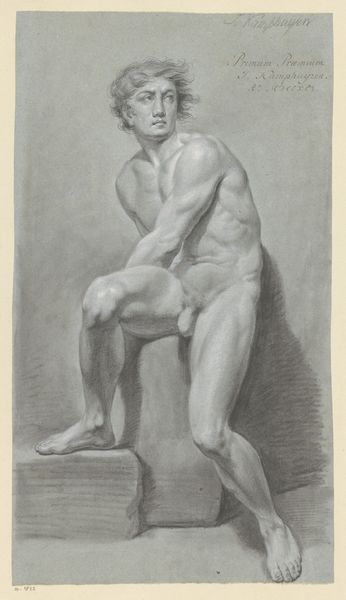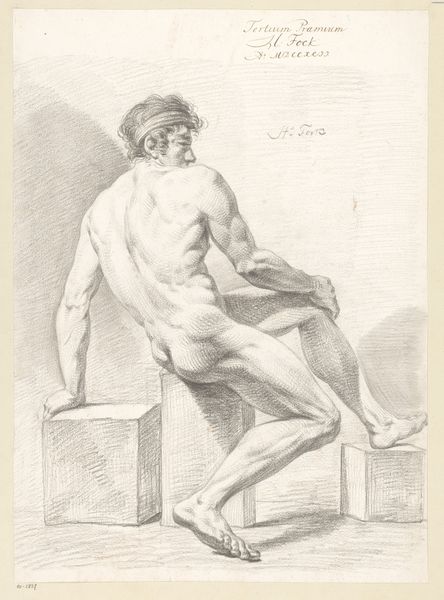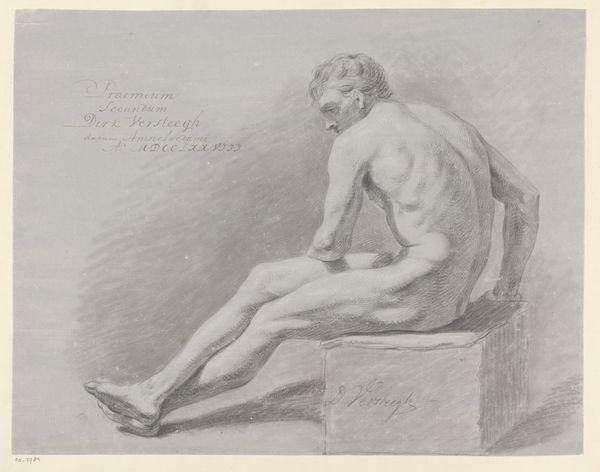
drawing, pencil, graphite
#
pencil drawn
#
drawing
#
pencil sketch
#
classical-realism
#
charcoal drawing
#
pencil drawing
#
pencil
#
graphite
#
portrait drawing
#
academic-art
#
nude
Dimensions: height 468 mm, width 376 mm
Copyright: Rijks Museum: Open Domain
This is a graphite drawing by Geerlig Grijpmoed, created in 1786. It's a nude male figure, seen from the back, and it won second prize that year. Now, the beauty of a drawing like this lies in the simplicity of its materials: graphite on paper. But don't let that fool you. Graphite, even in its humble form, offers a huge range of tonal possibilities. Look at how Grijpmoed uses subtle gradations to define the muscles of the back, the curve of the shoulder. The texture of the paper also plays a role, giving the drawing a slightly grainy quality. The process here is all about control and precision. Each line, each stroke of shading, is carefully placed to build up the form. The social context is interesting too. Drawings like this were often made as academic exercises, part of an artist's training. They reflect a classical ideal of beauty, and required skillful use of the material. The artwork shows how the most basic materials can be used to create something truly beautiful, challenging any separation between art and craft.
Comments
No comments
Be the first to comment and join the conversation on the ultimate creative platform.
